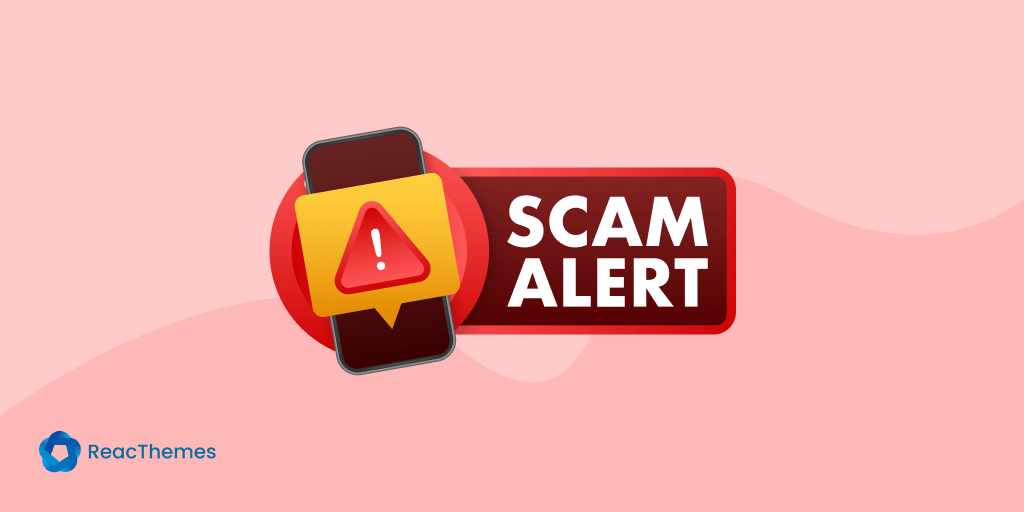Tired of sifting through endless spam ads on your favorite classifieds site? You’re not alone. As online marketplaces continue to flourish, so does the relentless influx of spam advertisements, making it increasingly challenging for users to navigate through legitimate listings.
Whether you’re a seasoned user or just dipping your toes into the world of online classifieds, the frustration of encountering deceptive or irrelevant ads is a universal experience. But don’t worry; this article will walk you through the steps that can control spam ads on a classified site.
So, without further ado, let’s dig deeper.
Types of Spam Ads
Spam ads come in various forms, and spammers are constantly evolving their techniques to bypass filters and reach a wider audience. Here are some common types of spam ads:
i. Email spam
- Phishing emails: Emails that attempt to trick recipients into revealing personal information, such as login credentials or financial details.
- Unsolicited commercial emails (UCE): Bulk emails sent to a large number of recipients promoting products or services.
ii. Social media spam
- Fake profiles: Spammers create fake profiles to promote products or services, often through friend requests or direct messages.
- Fake comments/shares: Spammers post fake comments or share content to increase visibility.
iii. Search engine spam
- Keyword stuffing: Websites may use excessive keywords to manipulate search engine rankings.
- Cloaking: Presenting different content to search engines and users to deceive search algorithms.
iv. Instant messaging spam
- Spam messages: Unsolicited messages sent through messaging platforms promoting products or services.
v. Online ad spam
- Pop-up ads: Intrusive ads that appear in new browser windows.
- Auto-redirects: Ads that automatically redirect users to other websites.
vi. Mobile app spam
- Push Notification Spam: Sending unwanted push notifications to users.
- In-App Ads: Excessive or deceptive ads within mobile applications.
vii. Comment spam
- Blog/Forum Comment Spam: Automated or manual posting of irrelevant comments containing links to promote products or websites.
viii. Malvertising
- Malicious Advertisements: Ads containing malware or links to malicious websites.
ix. SMS spam
- Unsolicited Text Messages: Sending unwanted promotional messages to mobile phones.
x. Snail mail spam
- Junk Mail: Unsolicited physical mail promoting products or services.
xi. Voice call spam
- Robocalls: Automated voice messages promoting products or services.
How Spam Ads Impact on Users and Sites
Spam ads, those intrusive and often irrelevant pop-ups, banners, and emails, can have a significant negative impact on both users and the websites they appear on. Here’s a breakdown of how.
Impact on users
- Disruption and annoyance: Spam ads are designed to grab attention, often through flashy visuals or loud noises. This can be disruptive and annoying for users trying to focus on the content they want to see.
- Privacy concerns: Some spam ads track user behavior and collect personal data without their consent. This raises privacy concerns and can erode trust in the websites that display them.
- Security risks: Spam ads can sometimes be malicious, containing malware or phishing links that can steal personal information or infect devices with viruses.
- Negative brand perception: Users often associate websites with the ads they see on them. So, if a website is overrun with spam, it can damage its brand reputation and make users less likely to trust it.
Impact on websites
- Reduced user engagement: Users are more likely to abandon a website that is cluttered with spam ads. This can lead to decreased traffic, lower engagement, and ultimately, lost revenue for the website owner.
- Damaged reputation: Websites that display a lot of spam ads can be seen as untrustworthy or even dangerous. This can damage their reputation and make it harder to attract and retain users.
- Technical issues: Spam ads can slow down website loading times and make it difficult for users to navigate the site. This can further frustrate users and lead them to abandon the website altogether.
- Lost advertising revenue: If users are turned off by spam ads, they are less likely to click on legitimate ads displayed on the website. This can lead to lost advertising revenue for the website owner.
Here are some additional things to keep in mind about the impact of spam ads
- The negative effects of spam ads are even more pronounced on mobile devices, where screens are smaller and users are more likely to be on the go.
- Some types of spam ads, such as pop-up ads and auto-playing videos, are particularly intrusive and annoying to users.
- There are several things that website owners can do to prevent spam ads from appearing on their sites, such as using ad blockers and content filtering tools.
Overall, spam ads are a nuisance for both users and website owners. They can disrupt the user experience, damage website reputations, and even pose security risks. It is important to be aware of the negative impacts of spam ads and to take steps to avoid them.
How to Control Spam Ads on a Classified Site
i. User registration and authentication
Implement a user registration system, requiring individuals to create accounts before posting ads. Additionally, incorporate email verification to confirm the authenticity of user accounts. This helps filter out automated bots and ensures that users are genuine individuals.
ii. Moderation and approval process
Introduce a moderation system where submitted ads undergo a review process before becoming publicly visible. Assign moderators to manually review ads or use automated tools to filter out spam content. This step is crucial in preventing inappropriate or misleading ads from reaching your audience.
iii. CAPTCHA and anti-bot measures
Integrate CAPTCHA or other anti-bot measures during the registration and ad posting processes. These measures help thwart automated scripts and bots that spammers often use to flood platforms with irrelevant content.
iv. Keyword filtering
Employ a keyword filtering system to detect and block common spam phrases or patterns within ad content. Regularly update the list of blocked keywords to stay ahead of evolving spam tactics and trends.
v. Image and URL verification
Verify the legitimacy of images and URLs included in ads. This helps ensure that the visual and linked content aligns with your platform’s guidelines. Implement restrictions on the number of images or links allowed per ad to prevent misuse.
vi. IP address monitoring
Keep track of IP addresses associated with suspicious activities. Implement IP blocking for repeat offenders or known spammers to prevent them from creating multiple accounts or engaging in spammy behavior.
vii. User reputation system
Establish a reputation system that rewards trustworthy users and penalizes spammers. Users can provide feedback on their interactions, and this feedback contributes to an overall reputation score. A positive reputation can give users more visibility and credibility on the platform.
viii. Ad posting limits
Set limits on the number of ads a user can post within a specified time frame. By restricting the frequency of ad reposting, you discourage spammy behavior and prevent a single user from dominating the platform with numerous ads.
ix. Feedback and reporting mechanisms
Provide users with easy ways to report spam or suspicious activity. Implement a reporting system where users can flag ads for review. Act promptly on user reports and investigate flagged ads to maintain a responsive and trustworthy platform.
x. Educational resources
Offer guidelines and tips to users on creating legitimate ads. Educate users about the consequences of spamming and the importance of maintaining a clean and trusted platform. By empowering users with knowledge, you contribute to a community that actively works against spam.
xi. Legal and policy enforcement
Clearly outline terms of use and policies regarding spam in your site’s terms and conditions. Make users aware of the consequences of engaging in spammy behavior, including potential legal actions. Enforce these policies to maintain a secure and compliant environment.
xii. Regular audits and updates
Conduct regular audits of your classified site to identify and address emerging spam trends. Stay informed about new techniques used by spammers and update your platform’s security measures accordingly. Regular maintenance ensures that your site remains resilient against evolving spam tactics.
Q.1. Why are there so many spam ads on my classifieds site?
Spam ads can be a common issue on classified sites due to the open nature of these platforms. Automated bots and malicious users often exploit vulnerabilities to post irrelevant or deceptive content.
Q.2. What role do user accounts play in controlling spam?
Requiring users to create accounts can deter spammers, as it adds an extra layer of accountability. Implement account verification processes to ensure the authenticity of user registrations.
Q.3. Can machine learning be used to combat spam on a classified site?
Yes, machine learning algorithms can be employed to analyze patterns and identify potential spam. Train the system to recognize and filter out suspicious content based on user behavior and content characteristics.
Q.4. How often should I update my spam prevention measures?
Regular updates are crucial to stay ahead of evolving spamming techniques. Monitor the effectiveness of your current measures and adjust them as needed. Consider using automated systems that can adapt to new threats.
Q.5. Are there specific keywords or patterns I should look out for to identify spam ads?
Yes, monitor for common spam keywords, unusual formatting, and patterns associated with fraudulent activity. Regularly update your list of blocked terms and patterns based on emerging spam trends.
Q.6. What is the role of user reporting in combating spam?
Empower users to report suspicious ads. Implement a user-friendly reporting system and investigate reported content promptly. Users can be a valuable resource in identifying and addressing spam.
Q.7. How can I balance user freedom with spam prevention?
Find a balance by allowing users to post content freely while implementing automated systems and user reporting features. Establish clear community guidelines, and enforce them consistently to maintain a trustworthy platform.
Q.8. Should I consider manual moderation for all ads?
Depending on the scale of your classifieds site, manual moderation may be impractical. Use a combination of automated tools and spot-checking for effective results. Reserve manual moderation for high-risk or reported content.
Q.9. Can I legally take action against spammers on my classifieds site?
Check the legal implications in your jurisdiction. Implement clear terms of service, and reserve the right to remove or block users engaging in spamming activities. Consult legal advice if necessary.
Conclusion
Controlling spam ads on a classified site is crucial for maintaining a positive user experience and ensuring the integrity of the platform. By implementing robust security measures such as captcha verification, content moderation, and user reporting tools, site administrators can effectively combat spam ads.
Additionally, establishing clear guidelines and policies for ad postings can help deter spammers from targeting the site. Regularly updating and refining these measures in response to new spam tactics is essential for staying ahead of malicious actors.
Ultimately, by working together with users and employing proactive strategies, we can create a safer and more reliable classifieds site for everyone. Let’s join forces to keep your platform free from spam!








